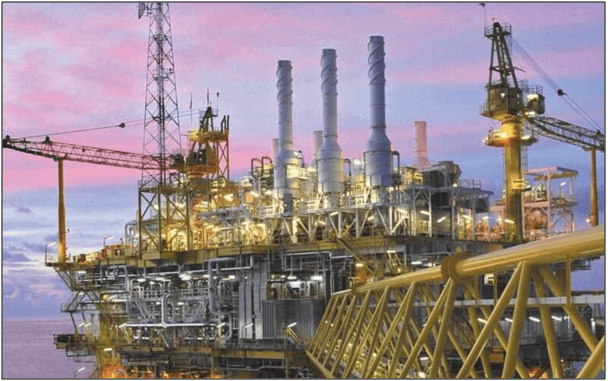When many potential sellers bid for the prices at which they are willing to sell their goods and services to a buyer, this is known as a reverse auction or buyer-determined reverse auction. In a forward auction, a seller puts up an item, buyers compete to obtain goods or services by offering increasingly higher prices. In a reverse auction, the buyer puts up a request for a required good or service, the sellers compete to obtain business from the buyer and prices will usually decrease as the sellers make a lower bid than each other.
The basic principle of a reverse auction is similar to a unique bid auction, and the difference is that each bid is kept confidential until the winner is declared.

Table of Contents
Defining Product Technical Specifications
Defining product technical specifications is an important factor in deciding whether this product is suitable for reverse auctions. Reverse auctions are usually more likely to lead to a purchase when the specifications are simple and there are not a lot of differences between supplier offerings. If the items being purchased are valuable and useful or the specified items are defined by a well acceptable industry standard, the nature of the items and supplier offerings makes them more likely to a price based negotiation like reverse auctions.
The supplier needs to deliver products that are genuine. The organization buyer could take considerations in supplier offerings and make comparisons in order to achieve the best value.

Identifying Potential Suppliers
The number of vendors participating in reverse auction, nature of the market, clear bidding requirements and specifications, long or short lead time notice given and the value of the procurement are factors which will affect the successful level of the competition. A large and competitive supply base is one of the most important element for conducting a reverse auction. A minimum of three strong, qualified and competitive suppliers must participate in reverse auction, otherwise the force of competitive bidding may not be sufficient to drive pricing lower and produce the desired result for the buyers. Suppliers with excess capacity will be more motivated to bid lower in order to fill their capacity. When conducting competition, suppliers must be given equal opportunity to participate.
Pricing Visibility in Reverse Auctions
Pricing will usually have either full or partial visibility. Full visibility reverse auctions allow unidentified suppliers to see competing bidders’ price offerings on screen in real time, putting more pressure on vendors to lower their bid offerings. Partial visibility can only allow vendors to see “lead-lag” indicator to determine if they are in the leading position and they stop bidding – or in a “lag” position – they need to enter a lower bid to have a chance to capture the business. Suppliers have more confidence in their bid positions in the process. Visibility should not be confused with Transparency Visibility. Visibility is a forecast of a company’s future performance. Transparency Visibility describes how accessible information is analysedby a company.

Identifying Specific Terms and Conditions
Terms and Conditions in an agreement act as a legal contract. The contract must be signed and stamped by both parties. The rules and guidelines form a legally binding agreement accepted by the buyer and seller.

Suppliers of the reverse auction should be notified of the requirements, terms and conditions, rights and responsibilities of both parties.This will help them to decide whether to participate and to determine their pricing strategy. Potential suppliers should be made aware in advance, as if the offered bids will be known to all the participating suppliers during the competition. General conditions are commonly included in most contracts. Special conditions may include payment, price variation, penalties and others.
Key Benefit and Limitation of Reverse Auctions
If used correctly, a reverse auction can deliver the lower pricing than the normal quotations bidding process without further price negotiation. It is less liable to claims of unfair treatment and breaking of probity. After the reverse auction, all bids are recorded and cannot be modified which provides an audit trail of prices offered that can be inspect closely at any time. It helps to achieve a competitive market price, and potentially save cost. However, it is essential that the reverse auction process complies with organization policies. Procurement focus mainly on price and the outcome being sought. Considerations of cost-related factors include up-front price and transaction costs incurred. Reverse auctions have very limited ability to deal with non-cost factors like quality, delivery and service. Prequalification procurement processes will overcome this issue.
The Reverse to Competitive Bidding
Competitive Bidding is a form of procurement practice used to obtain of goods and services. The ultimate goal is to ensure opportunity equality and transparency. This is the reason that all high-value acquisitions undergo this process. Open bidding is closely associated with private sectors. There are no restrictions on who can submit a bid. Selective Bidding only deals with high-value acquisitions, only vendors who receive an invitation from the client will be able to submit a bid. Most construction and engineering project managers prefer negotiated bidding, this is probably due to the complex nature, size of the contracts and it is cost-effective. In a Single-stage bidding, important information is given to the vendors, who will need to estimate the total project’s costs. After receiving an invitation, they will submit a bid, then wait to be selected. In a Two-stage bidding, the project information will only be provided after the vendor is selected, then the negotiations can begin.
The full content is only visible to SIPMM members
Already a member? Please Login to continue reading.
References
David Wyld. (2011). “Current Research On Reverse Auctions: PART II-Implementation Issues Associated With Putting Competitive Bidding To Work”. Retrieved from https://www.researchgate.net/publication/266887047, accessed 21/03/2021.
EPIQ Tech. (2020). “Reverse Auctions”. Retrieved from https://www.epiqtech.com/reverse_auctions.htm., accessed 21/03/2021.
Joe Kok Kong Loong, DPSM. (2019). “Essential Technology Application for Public Procurement”. Retrieved from SIPMM: https://publication.sipmm.edu.sg/essential-technology-application-public-procurement/, accessed 21/03/2021.
Michelle Wan, PDPM. (2017). “Eight Key Strategies to Reduce Cost in the Construction Sector”. Retrieved from SIPMM: https://publication.sipmm.edu.sg/eight-key-strategies-reduce-cost-construction-sector/, accessed 21/03/2021.
ProcurePort Blog. (2017). “6 Reasons Why Reverse Auctions Fail”. Retrieved from https://blog.procureport.com/6-reasons-reverse-auctions-fail/, accessed 21/03/2021.
The State of Queensland (Department of Housing and Public Works). (2018). “Reverse auctions Office of the Chief Advisor – Procurement”. Retrieved from https://www.hpw.qld.gov.au/__data/assets/pdf_file/0015/3354/procurementguidereverseauctions.pdf., accessed 21/03/2021.
WillKenton. (2021). “Business Essentials”. Retrieved from https://www.investopedia.com/terms/v/visibility.asp. accessed 21/03/2021.
Zenaida de Guzman, DPSM. (2020). “Adopting Lean Practices for Effective Procurement”. Retrieved from SIPMM: https://publication.sipmm.edu.sg/adopting-lean-practices-effective-procurement/, accessed 21/03/2021.

